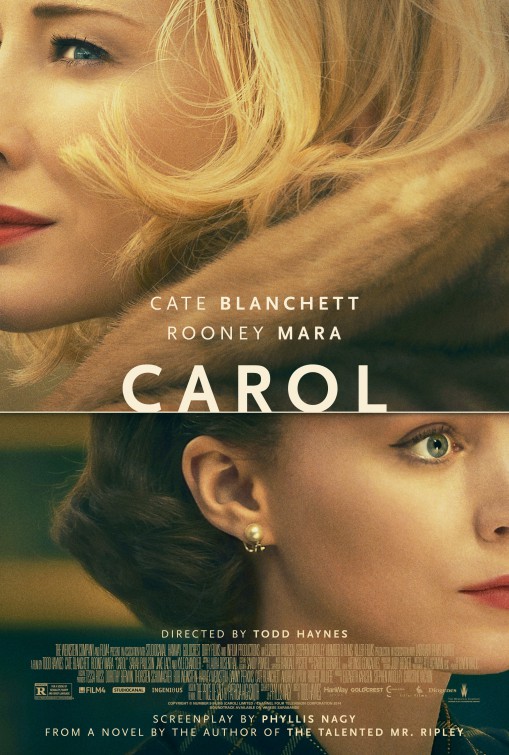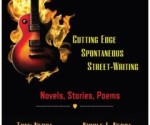Todd Haynes discusses his new film Carol
 One of my very favorite directors, Todd Haynes has made another incredible film, this time about two women. Therese Belivet (Rooney Mara) spots the beautiful, elegant Carol (Cate Blanchett) perusing the doll displays in a 1950s Manhattan department store. The two women develop a fast bond that becomes a love with complicated consequences.
One of my very favorite directors, Todd Haynes has made another incredible film, this time about two women. Therese Belivet (Rooney Mara) spots the beautiful, elegant Carol (Cate Blanchett) perusing the doll displays in a 1950s Manhattan department store. The two women develop a fast bond that becomes a love with complicated consequences.
Your film is beautiful and you handled the story of how these women fall in love very sensitively. What was your approach?
I was taking it on as a love story, something I had not really taken on in my other films. Then I began reading The Price of Salt, which is another Patricia Highsmith book. This is a beautiful novel and then we did an adaptation that becomes this gorgeous script that came to me with Cate attached. So I had a bundle of incentives to do this movie when it first landed to me in 2013. But love stories are more about conquering the subject. That’s something I had not really conquered in my other films. Unlike war movies which are about conquering the object. It’s always the subject that is in a state of vulnerability and peril at some level.
So there is a difference between stories about love and war?
Love stories are unlike war movies. With much of Carol one has a more powerful positive, but what I love about the story is what moves them through these series of events that changes them both and ultimately leads them to great change by the end of the film. So all of that made the smaller elements of the movie. Who is looking at who is being looked at. A subject that was very conducive to the cinematic language.
As for research, what inspired you?
Ruth Orkin was one of the color photographers work we looked at. She was a New York based artist and photojournalist. Orkin was the partner of Morris Engel, whose photos we also looked at. They did The Little Fugitive and documentaries. They collaborated on movies that used natural light, for example the one they did on Coney Island. Little Fugitive is the story of a kid that runs off to Coney Island. Then there was a film called Lipstick and Lollipops, which was much more relevant to our film. It is the story of a single mother trying to raise her child. This is a woman who was trying to ingratiate herself to her boyfriend. She was not a wealthy woman but rather a woman with tremendous poise like Carol.
How did you direct Cate to be this character you worked with her before?
Cate’s character reminded me of something you might see in your Grandmother. It’s just not produced anymore culturally. I gave insight into something that is lost. There’s a femininity that you JUST don’t see anymore. Someone who has a certain grace and certain gate in their walk that you just don’t see anymore.
The social mores were different then, no?
Yes because it was set in the 50’s, so the story could get ugly with custody battles and the character of her husband Hodge and his family. In a veiled threat by her husband she then decides she wants to see her daughter on her own terms, and you can imagine how ugly this could get for a prominent family like her husbands, I mean played out in court. It’s a showdown of this love for Carol actually. But, the thing about the husband, this happens at an uncustomary period in his life. One presumes the husband always took his wife for granted. When the film begins he has already started to reevaluate what she means in his life. And the way he is inviting her out and spend time with her seems to be his new project or regiment.
So really the subject is unfulfilled desire?
This movie is about you seeing desire and you never fulfill it. It’s like smoking. I know this from being an ex-smoker. It’s a practiced cycle where you see yourself being satisfied and you crave that moment but you are always chasing the original moment you can never get in that cigarette. It’s always played out in Hollywood movies. Women and desires are displaced into practices like smoking.
The overall look of the film, how did you choose working with the renowned cinematographer Ed Lachman ?
I worked him with on Mildred Pierce. We wanted to downgrade the elements of grain. We wanted to downgrade the sophistication of lenses and stock grade with the grain elements that almost continually goes away. We shoot on 35mm film sometimes, which we loved and had a really great time shooting on that project. We wanted to find a city that would look like the 50’s, a city that was transitioning out of war. The Eisenhower war years we attribute to that shiny glossy decade. We wanted to bring some of that monochromatic style to the film and to make it look like 16mm. We found Cincinnati, Ohio to be the best city to film in that had that architectural integrity and great interior shots.
Is social class another metaphor in this movie?
Social class in that day was important for an older woman. She could invite a younger woman to lunch and it would be totally appropriate. There were a lot of things that were so different at this time and the film reminds you of that, two women checking into a hotel together for example. At that time, it would be a scandal.
Was Kyle Chandler, the actor that plays Cate’s husband, your first choice?
Yes I totally lucked out in getting Kyle. I have been watching his work. All the TV shows and movies he’s been in and you know casting a man to play opposite Cate Blanchett is not an easy task. Because a lot of male actors today have kind of grown up as boys, they still wear their baseball caps and it just doesn’t make for a real grown up, but with Kyle we found an animal. You get what I mean just by the way he enters that era with such believability. When I saw him in the clothes the first time, I was like whoa! He had done a show about the 40’s called Home Front. But it just suited him so well. Again very believable.
But you found a subject that was complex for the time in the husbands character?
This all started with the writing. Patricia Highsmith is quite hard on her male characters in her books, so the screenwriter brought a very different complexity and ambiguity to the character. You felt and understood that they were in a place where they were struggling, lashing out, being reactive, but they were human. Kyle brings this humanity to the film.
Is the story about class and privilege as well?
I do not particularly isolate privilege with desire or class privilege. The enormous state of desire that Carol is in, we keep seeing this in a way that is the machine that is moving the narrative forward for a good part of the film, this desire with Cate’s character, and you wonder sometimes how she really does feel about this woman and she sometimes takes a detour like its feels like a sidebar, meaning the issues that she has to confront. At times she probably wonders or feels embarrassed by it. Should she in reality be spending time doing this with this girl who is just taking form in front of me. I think all of that gets re-evaluated towards the end of the film.
Her former lover, does she help to explain things in the film for the audience?
Yes, it’s most articulated in the scene with Carol’s former girlfriend as she has had a previous relationship with a woman. Toward the end of the movie they are both stripped down. We see a side of Carol’s character we have not seen prior in the movie. She is the one being revealed more in the sex scene with the two women.
We were even questioning how to show this intimacy when one woman says to the other, my body never looked like that, as Cate says to the younger woman. We do not see this very often. A kind of expression of intimacy that I cannot find a parallel to with gay men or certainly not with heterosexual couples. Its pretty unique to have two women talk like this.
Carol, directed by Todd Haynes and starring Cate Blanchett and Rooney Mara is now is select theaters.










